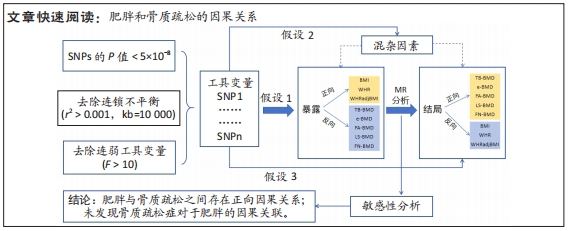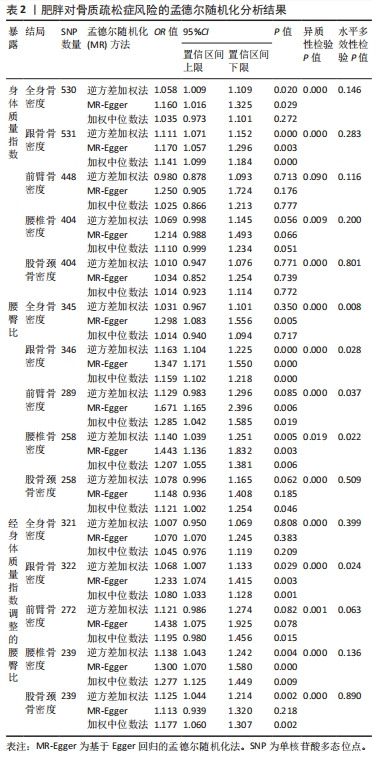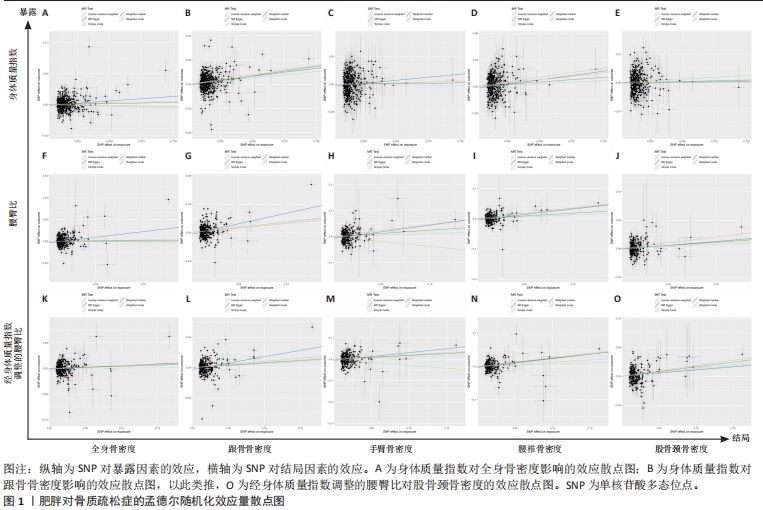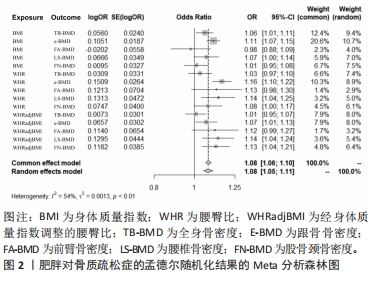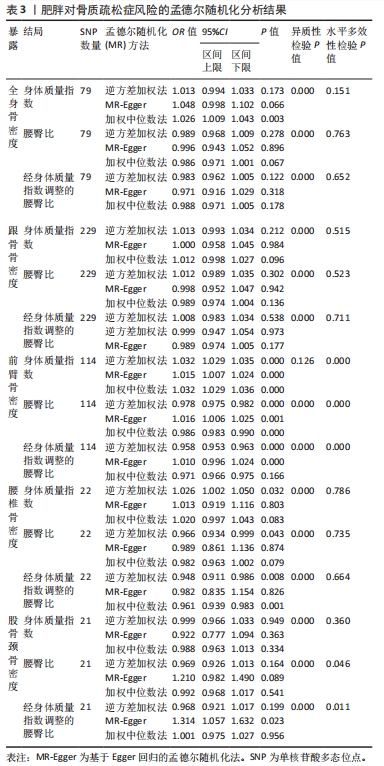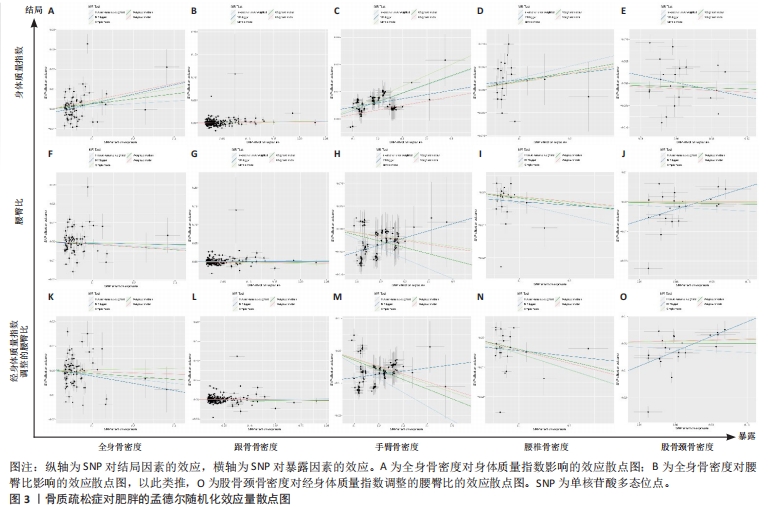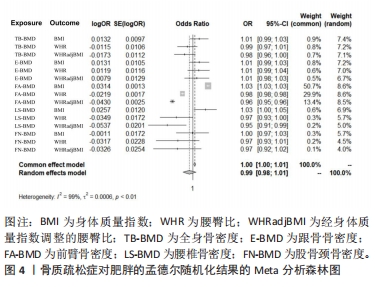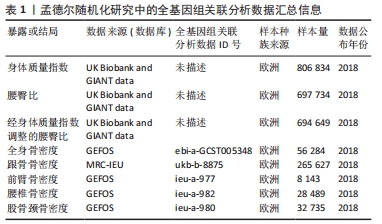[1] WU D, CLINE-SMITH A, SHASHKOVA E, et al. T-cell mediated inflammation in postmenopausal osteoporosis. Front Immunol. 2021;12:687551.
[2] XIAO PL, CUI AY, HSU CJ, et al. Global, regional prevalence, and risk factors of osteoporosis according to the World Health Organization diagnostic criteria: a systematic review and meta-analysis. Osteoporos Int. 2022;33(10):2137-2153.
[3] SIRIS ES, ADLER R, BILEZIKIAN J, et al. The clinical diagnosis of osteoporosis: a position statement from the National Bone Health Alliance Working Group. Osteoporos Int. 2014;25(5):1439-1443.
[4] BOUDIN E, VAN HUL W. Mechanisms in endocrinology: genetics of human bone formation. Eur J Endocrinol. 2017;177(2):R69-R83.
[5] MARSHALL D, JOHNELL O, WEDEL H. Meta-analysis of how well measures of bone mineral density predict occurrence of osteoporotic fractures. BMJ. 1996; 312(7041):1254-1259.
[6] EBELING PR, NGUYEN HH, ALEKSOVA J, et al. Secondary osteoporosis. Endocr Rev. 2022;43(2):240-313.
[7] BLüHER M. Obesity: global epidemiology and pathogenesis. Nat Rev Endocrinol. 2019;15(5):288-298.
[8] NIMPTSCH K, KONIGORSKI S, PISCHON T. Diagnosis of obesity and use of obesity biomarkers in science and clinical medicine. Metabolism. 2019;92:61-70.
[9] FELSON DT, ZHANG Y, HANNAN MT, et al. Effects of weight and body mass index on bone mineral density in men and women: the Framingham study. J Bone Miner Res. 1993;8(5):567-573.
[10] JOHANSSON H, NAUREEN G, IQBAL R, et al. FRAX-based intervention thresholds for Pakistan. Osteoporos Int. 2022;33(1):105-112.
[11] FINTINI D, CIANFARANI S, COFINI M, et al. The bones of children with obesity. Front Endocrinol (Lausanne). 2020;11:200.
[12] EVANS AL, PAGGIOSI MA, EASTELL R, et al. Bone density, microstructure and strength in obese and normal weight men and women in younger and older adulthood. J Bone Miner Res. 2015;30(5):920-928.
[13] PIñAR-GUTIERREZ A, GARCíA-FONTANA C, GARCíA-FONTANA B, et al. Obesity and bone health: a complex relationship. Int J Mol Sci. 2022;23(15):8303.
[14] RINONAPOLI G, PACE V, RUGGIERO C, et al. Obesity and bone: a complex relationship. Int J Mol Sci. 2021;22(24):13662.
[15] GKASTARIS K, GOULIS DG, POTOUPNIS M, et al. Obesity, osteoporosis and bone metabolism. J Musculoskelet Neuronal Interact. 2020;20(3):372-381.
[16] BIRNEY E. Mendelian randomization. Cold Spring Harb Perspect Med. 2022;12(4): a041302.
[17] WANG L, YU W, YIN X, et al. Prevalence of osteoporosis and fracture in china: the china osteoporosis prevalence study. JAMA Netw Open. 2021;4(8):e2121106.
[18] NUTTALL FQ. Body mass index: obesity, BMI, and health: a critical review. Nutr Today. 2015;50(3):117-128.
[19] MUDIE K, LAWLOR DA, PEARCE N, et al. How does the association of general and central adiposity with glycaemia and blood pressure differ by gender and area of residence in a Malawian population: a cross-sectional study. Int J Epidemiol. 2018;47(3):887-898.
[20] JAYEDI A, SOLTANI S, ZARGAR MS, et al. Central fatness and risk of all cause mortality: systematic review and dose-response meta-analysis of 72 prospective cohort studies. BMJ. 2020;370:m3324.
[21] HASANI-RANJBAR S, JAFARI-ADLI S, PAYAB M, et al. Association of osteoporosis with anthropometric measures in a representative sample of iranian adults: the iranian multicenter osteoporosis study. Int J Prev Med. 2019;10:157.
[22] JIA L, CHENG M. Correlation analysis between risk factors, BMD and serum osteocalcin, CatheK, PINP, β-crosslaps, TRAP, lipid metabolism and BMI in 128 patients with postmenopausal osteoporotic fractures. Eur Rev Med Pharmacol Sci. 2022;26(21):7955-7959.
[23] SANTOS VRD, CHRISTOFARO DGD, GOMES IC, et al. Relationship between obesity, sarcopenia, sarcopenic obesity, and bone mineral density in elderly subjects aged 80 years and over. Rev Bras Ortop. 2018;53(3):300-305.
[24] TIAN H, PAN J, QIAO D, et al. Adiposity reduces the risk of osteoporosis in Chinese rural population: the henan rural cohort study. BMC Public Health. 2020; 20(1):285.
[25] GAO X, SHEN S, NIU Q, et al. Differential bone metabolism and protein expression in mice fed a high-fat diet versus Daurian ground squirrels following natural pre-hibernation fattening. J Zhejiang Univ Sci B. 2022;23(12):1042-1056.
[26] KRISHNAMOORTHY D, FRECHETTE DM, ADLER BJ, et al. Marrow adipogenesis and bone loss that parallels estrogen deficiency is slowed by low-intensity mechanical signals. Osteoporos Int. 2016;27(2):747-756.
[27] SUNDH D, RUDäNG R, ZOULAKIS M, et al. A high amount of local adipose tissue is associated with high cortical porosity and low bone material strength in older women. J Bone Miner Res. 2016;31(4):749-757.
[28] DENG G, YIN L, LI K, et al. Relationships between anthropometric adiposity indexes and bone mineral density in a cross-sectional Chinese study. Spine J. 2021;21(2):332-342.
[29] SONG W, SHENG Q, BAI Y, et al. Obesity, but not high-fat diet, is associated with bone loss that is reversed via CD4(+)CD25(+)Foxp3(+) Tregs-mediated gut microbiome of non-obese mice. NPJ Sci Food. 2023;7(1):14.
[30] DA SILVA SV, RENOVATO-MARTINS M, RIBEIRO-PEREIRA C, et al. Obesity modifies bone marrow microenvironment and directs bone marrow mesenchymal cells to adipogenesis. Obesity (Silver Spring). 2016;24(12):2522-2532.
[31] ROY B, CURTIS ME, FEARS LS, et al. Molecular mechanisms of obesity-induced osteoporosis and muscle atrophy. Front Physiol. 2016;7:439.
[32] COHEN A, SHEN W, DEMPSTER DW, et al. Marrow adiposity assessed on transiliac crest biopsy samples correlates with noninvasive measurement of marrow adiposity by proton magnetic resonance spectroscopy ((1)H-MRS) at the spine but not the femur. Osteoporos Int. 2015;26(10):2471-2478.
[33] CORDES C, BAUM T, DIECKMEYER M, et al. MR-based assessment of bone marrow fat in osteoporosis, diabetes, and obesity. Front Endocrinol (Lausanne). 2016;7:74.
|
